Social phobia (also known as “social anxiety disorder”) is a mental health condition that causes people to feel an undue amount of anxiety related to their social relationships. The primary fear a person with social phobia tends to have is that other people will find him or her lacking in some way. For example, a social phobic at a party may worry that he or she will come across as “uncool,” be laughed at by others, or that no one at the party will want to dance with him or her. These worries are normal, especially for an adolescent, but someone who has social phobia worries about these things almost incessantly. He or she will probably start to worry about the party long before it actually begins, whereas a healthy person would only feel somewhat nervous for a brief period of time. A healthy person is also more likely to start to relax after being at a social gathering for a while; a person with social phobia tends to grow more anxious. A study by Beidel et al. titled “ Psychopathology of Adolescent Social Phobia” was published in 2006. The researchers in the study were interested in focusing specifically on teens who have social anxiety disorder. What traits do these young people have in common? How do they differ from their healthy peers? Beidel and the other researchers worked together to answer these questions and more. Facts and Figures The study cites that “prevalence rates for adolescent social phobia range from 5 to 16% of the general population.” To represent teens with social phobia, the researchers selected sixty-three social phobic teens. Forty-three teens who did not have any mental health conditions were chosen to represent the general teen population. Some of the characteristics and behaviors that the researchers focused on in the teens are depression, social isolation, fear of being criticized or failing, and loneliness. The teenagers who had social phobia were found to be more likely to experience depression, isolation, and loneliness. They were also noted to be more likely to fear criticism and failure. Teenagers with social phobia may be at an increased risk for having difficulty in school and for using drugs. One of the concerns expressed by the researchers is the lack of study on teens who have social phobia. Many studies group teens with children or adults, and this may affect the data we have. Advice for Parents Future research may allow us to conclude that teens with social phobia are indeed at an increased risk for a number of factors which can have a negative impact on their happiness. For now, it can be beneficial for parents of a social phobic teen to talk seriously with their son or daughter about the disorder. Together they can consider whether some form of therapy may be helpful and what they can do to make the condition less stressful on both parties.
 How Does Child Anxiety Disorder Present Itself? Child anxiety disorder is usually called 'separation anxiety' and often manifests itself in what is known as school phobia. Separation Anxiety is a fear of leaving the safety of their parents or home. Child anxiety carries with it the same symptoms as adult anxiety but a child doesn't have the experience or intellectual capacity to make sense of the symptoms. Child anxiety can present itself in many ways, including classic features of anxiety disorders, but primarily avoidance of potentially threatening situations, especially school visits, holidays and social events. What Causes Child Anxiety? At the age of about 13, I went through a period of what my doctor called 'school phobia'. I became irrationally anxious, depressed and scared. I would regularly seek the assistance of the school nurse, call my mother to collect me and sit alone somewhere hiding. Feeling that way at such a young age is dreadful, it is not only scary but confusing too, the psyche of a child is very superficial until this age and the sudden realization that life is not all about play and fun and in fact quite daunting, challenging and delicate, comes as quite a shock to a child. Children discover their mortality a varying ages but this realization too, can cause immense distress if not handled correctly by parents or guardians. The catalyst for the child anxiety is unimportant, what is important, however, is that the anxiety is dealt with correctly and directly. How Common is Child Anxiety? Probably more common than you would think and it's escalating! More and more children come to us for help, both directly and through their parents. Child anxiety is very common indeed, but also very successfully treated. About 1 - 2% of children suffer from child anxiety before they reach adolescence. Will My Child's Anxiety Continue into Adulthood? My research has shown that this does not happen as long as the anxiety is 'nipped in the bud' before a strong pattern of behavior is adopted by the child. Child anxiety is usually based on the insecurities of childhood and as the child matures, the anxiety is eliminated. Can Children With Child Anxiety Disorder Be Cured? It is obviously extremely important that childhood anxiety is dealt with as early as possible. For this reason The Linden Method has a whole chapter dedicated to Child Anxiety which shows parents how to implicate the method with their children. The Linden Method works on the root cause of anxiety disorders and has been proven to quickly and permanently cure them, therefore, it is a perfect technique for the elimination of child anxiety. It has been used with equal success by children and adults alike. I have children of 4 and seniors of 86 using the method. It is important, of course, that a child is guided through the method by an adult. The solution is easy to understand, fast and permanent at eliminating the anxiety disorder which drives child anxiety. Is The Linden Method suitable for children? While we have experienced significant success with children using the Linden Method, we have recently developed
The Linden Method Junior Edition which offers additional support materials to assist you and your child in their recovery.
 CLICK HERE
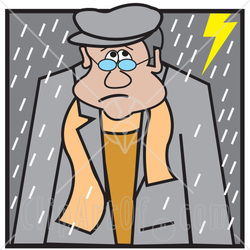 0 Comments Sometimes people have the impression that their experience of anxiety is like being hooked up to an electroshock machine and that it just takes a flick of the anxiety switch to cause a flood leading to a full blown panic attack. People in this situation often feel that are lucky to make it through the day without that switch been flicked but in the back of their mind they fear that it could happen at any moment day or night. They remain on high alert anticipating it. Anticipating the big one! In fact most people who experience panic attacks fear it in this manner. It is natural for people to think this way as often the panic attacks come forcefully out of the blue. The truth of the situation is however different. A panic attack does not lurk in the background waiting to pounce, it can feel that way in your mind if you are anxious but that is not how it really works. Panic attacks are actually something we decide to initiate when we feel out of control. It begins possibly with a skipped heart beat or tightness around the chest, it is then that your mind fires off a thought warning that these sensations are very unusual and signal a dangerous event that needs urgent medical attention or else… The thought that triggers almost all panic attacks is :
“This is too much , I cannot handle this,” Then the adrenaline starts to really pump.
“Ah I was right look my body is going into a fit…
“I am terrified by what is about to happen…HELP,- PANIC… !”The severity of the panic attack is directly related to how you are feeling at that time. If you are exhausted physically, mentally or emotionally then you are more vulnerable to feeling anxious. After the panic attack has run its course, it is followed by a prolonged period of general anxiety. During this time the person fears that the panic switch might go off again at any moment sending them into another tailspin of high anxiety. When you feel this way it is very difficult to force a relaxed state of mind through will power (as some other methods would have you do). So what can you do to stop the mind overreacting to these situations and not initiate the panic attack? Well most of this is about your mind reacting to false signals, so the trick is to train yourself to recognize these false signals for what they and thus shatter the illusion that there is a danger. There is something very powerful in human psychology and that is the power of giving yourself totally to something. By that I mean, when we make a resolute decision to go for something, results are immediate. In this case you are going for the goal of an anxiety free life. You reach a point where you are completely fed up with this condition and that mindset can produce a real breakthrough. Remember anxiety holds us prisoner because we give it authority. We give it control because it threatens us with terror or even death if we do not obey. Turn fear into excitement! Really chase after the anxiety. It is the anticipation of having a panic attack that keeps you in a general state of anxiety, -so end the anticipation. There is an element of throwing all caution to the wind to make this fully effective. You abandon yourself to the fear of a panic attack. Sometimes the best way is to get really mad at the terror and say: “OK come on do your worst- and it better be very strong because I will not have this ruining the rest of my life” “My life and the people in it are more important than this false fear could ever be, so do your worst because I have had enough.” The minute you really throw yourself at a panic attack it disappears. It disappears because what was keeping it alive was your fear of having one. Now you are not afraid in fact you are actually demanding to have a really Big Bad One NOW DO that right now!To make this really work you have to throw yourself at the anxiety 100% -No coming back Don’t worry about having an off the scale ‘gigantic’ panic attack. I bet you have already had the very worst panic attack you will ever experience again. That is because the worst panic attacks are generally always the first few as you have no idea at all what is happening to you. Ignorance in those moments is not bliss.What I am trying to say is that there is no ‘ultimate’ panic attack waiting in the background that will finally push you over the edge. Trust and believe that you will always be able to handle the anxious sensations each and every time. You will. What you get by following my advice is confidence that you can in fact easily handle the anxious sensations. Confidence is so crucial to tackling this problem. Anxiety can be likened to a fog that we must travel through in order to move beyond the fear of what may be on the other side. When we fail to move through it, the fear will linger and limit us from achieving all the things we would like to accomplish with our lives. Barry McDonagh Click here to learn more about Panic Away
 Comprehending Agoraphobia
It is commonly believed that someone who sufferers from agoraphobia has a fear of crowded situations.
Actually, it is a type of anxiety disorder in which the individual fears experiencing a panic attack in general, anywhere. Whether it's at home, at work, in a restaurant or where ever.
Social anxiety disorder (SAD) is frequently mistaken for agoraphobia.
Agoraphobia commonly results in a person avoiding situations such as being alone outside of their home, traveling in a car, bus or airplane or being in a crowded place.
Anywhere that they might experience a panic attack and are unable to receive help would be totally avoided.
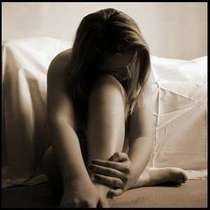 Even though some people with agoraphobia are o.k. with seeing visitors, it has to be in a defined space where they feel that they are in control.
These people may very well live for years without leaving their homes. Gladly welcoming visitors and working, just as long as they don't leave their safety zones.
Is Agoraphobia Very Common?
It is speculated that 3.2 million Americans between the ages of 18 and 54 are living with agoraphobia. Most people develop agoraphobia after the emergence of panic disorder.
The National Institute of Mental Health (NIMH) reports that one out of three people with panic disorder will also develop agoraphobia.
Women are twice as likely as men to develop agoraphobia. This may be explained by social/cultural factors that promote the greater expression of avoidance coping strategies by women. Although other stimuli may also play a part in it.
 What Are The Symptoms?
Individuals with agoraphobia are, as a rule, profoundly hypersensitive to their own bodily perceptions. Subconsciously they over react to everyday events.
For example, the exertion needed to climb a flight of stairs may possibly evolve into an all-out panic attack because it increases their heart rate and breathing becomes rapid. The agoraphobic will interpret this as the launch of a panic attack.
People with agoraphobia become aware of and steer clear of any situations where an attack may be triggered.
Someone with this disorder may have a severe panic attack in any situation where he or she feels trapped, uneasy, not in control or just plain too far from his or her comfort zone.
When the anxiety becomes severe, the person may confine themselves to his or her home. Sometimes the confinement is kept to one or two rooms. They may even become bed-bound until the adrenaline level returns to normal and the over-stimulated nervous system has calmed down.
What Are My Treatment Options?
The treatment options for panic disorder and agoraphobia are similar.
Successful treatment of agoraphobia is plausible for a great deal of people through a very gradual progression of exposure therapy together with cognitive therapy and sometimes anti-anxiety or antidepressant medications.
Cognitive therapy gives you the information that you need to implement change in counter-productive or harmful thought patterns. Thus allowing you to study your feelings and determine how to separate valid thoughts from unrealistic ones.
Much the same as behavior therapy, you are actively involved in your own recovery and establish a sense of control.
Behavior therapy for agoraphobia helps you to take control over unwanted behavior. It also shows you how to cope with difficult situations. Routinely through controlled exposure to them.
Cognitive-Behavior Therapy, or CBT, is a combination of the above two therapeutic strategies. The best part about these types of therapies is that the patient discovers recovery skills that are useful for a lifetime.
Anti-anxiety medications include benzodiazepines such as alprozalam. The antidepressants most often used are SSRIs like paroxetine, fluoxetine and sertraline.
While those are the most commonly used treatment options, others include relaxation techniques, hypnotherapy, neuro-linguistic programming (NLP), and energy psychology.
With the right techniques, agoraphobia can be treated and you can go on to live a productive life. There's no miracle cure for agoraphobia, but there are a few options that will help you discover how to deal with and overcome the fear and anxiety.
I suffered with anxiety and panic attacks for many years. Now I'm on the road to a complete and permanent recovery.
If you or someone you care about suffers from anxiety attacks, do something!
Get your life back.
Do it now!
Learn to manage anxiety and recognizing the anxiety attack for what it is.
Just fear, and that's all it is.
Anxiety is a normal part of childhood, and every child goes through phases. A phase is temporary and usually harmless. But children who suffer from an anxiety disorder experience fear, nervousness, and shyness, and they start to avoid places and activities.
Here are things you can do at home to help your child manage his or her anxiety disorder:
* Pay attention to your child’s feelings.
* Stay calm when your child becomes anxious about a situation or event.
* Recognize and praise small accomplishments.
* Don’t punish mistakes or lack of progress.
* Be flexible and try to maintain a normal routine.
* Modify expectations during stressful periods.
* Plan for transitions
(For example, allow extra time in the morning if getting to school is difficult).
It's important that you have the same expectations of your anxious child that you would of any other child.
Children rely on the support of parents and teachers to help them deal with their emotions during and after traumatic events.
Keep in mind that your child’s anxiety disorder diagnosis is not a sign of poor parenting. It may add stress to family life, however. It is helpful to build a support network of relatives and friends.
Is your child struggling with anxiety? Learn how to help them conquer their anxiety, restore their self-esteem, and take back their childhood!
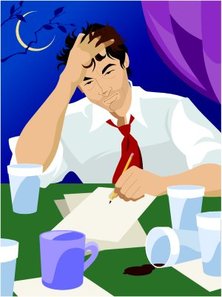 Have you noticed that when you feel anxious, your mind pokes at the anxiety all day long. We 'check in' every 5 minutes to see how we are feeling and if the anxiety is increasing, it upsets us more, resulting in yet more anxiety. Getting your mind out of the way is key to healing all anxiety. Once your mind is no longer fueling the fire of anxiety, your nervous system has a chance to unwind and relax. But how do you get your mind out of the way so healing can happen? You cultivate ' Outright Acceptance'. 100% acceptance of how you are feeling. Outright acceptance of the anxiety, outright acceptance of the uncomfortable sensations or thoughts, outright acceptance that all will be well. Whatever you are feeling at that moment, you allow it to be present. "So that's how its going to be today? Fine, then come on anxiety lets go, let's get on with the day together" Then you gently move your awareness away from 'checking in' on how you feel, back onto life! You stop paying the anxiety attention, no matter how uncomfortable it feels and start paying attention to what is going on around you. If you are at work, focus 100% on that. If you are talking to someone, pay them full attention. Whatever you are doing, put all your attention there. Every time your mind flicks back to the anxiety, you don't get frustrated but accept the way it feels (without trying to change it) and move your attention gently back onto what you were just doing. Don't feel like you have to force this, it should be a subtle movement. You may have to do it a hundred times in the day but with practice you will master it. That subtle movement joins you with life again. Each time you do it, you inch closer to feeling more relaxed and at peace with the anxiety. BTW, this is not a form of distraction, you are not trying to avoid your feelings. You are accepting the way you feel internally 100%, while moving your attention outwardly onto what is going on around you. Up until now you may have been trying to 'manage' the anxiety with your mind. What you learn through Panic Away, is that the fastest way to feel better is not to micro-mange your thoughts and feelings but rather to just get out of the way and allow natural healing to occur. You heal fast through the peaceful flow that comes from outright acceptance with outward focus. What a relief to know that we don't have to think ourselves better, we just have to stop getting in the way. Outright acceptance is like a strong current that takes you home to your care free self. Take a moment right now to cultivate outright acceptance. Discover how to start overcoming your anxiety and panic attacks TODAY by clicking below:
What is the cause of panic attacks and anxiety?
I'll tell you and I'll give you THE solution! Anxiety is actually a really useful tool for detecting danger but when anxiety levels escalate to an inappropriate level it can be very disturbing and intrusive.
So what is the cause of panic attacks and anxiety? Anxiety levels become heightened when situations arise which present us with potential danger. As we face an anxiety provoking situation, adrenaline is released by the brain, specifically a small organ called the Amygdala, (which controls the anxiety response), in order to prepare the body for what is commonly referred to as 'the flight or fight' response.
THIS is the true cause of panic attacks and anxiety! This process has evolved in order to prepare the body for action when faced with danger and is vitally important for survival but it also activates the anxiety response. The body is then primed for action, but when there isn't a danger present, this anxiety increase has no practical use and sometimes, panic ensues.
When the body is in a constant state of anxiety, ready for 'fight or flight'. The Limbic System, which is the regulator for emotional reactions in the brain, including anxiety, re-sets itself at a higher 'normal' level of anxiety. This higher level of anxiety manifests itself in may ways, this is called an anxiety disorder. Some people can cope with this increased arousal but most don't.
Anxiety disorders, (I dislike the word disorder, it suggests illness and anxiety isn't an illness), develop as a result of a relearning process which happens in the brain, allowing the body and brain to reset itself at a higher than normal anxiety level. This produces symptoms and sensations, these cause anxiety and worry and the spiral of negativity is started.
Anxiety isn't about mental illness, it's about a minute change in the way the brain handles anxiety provoking information from the sensory organs. There is a switch in everyone called the Amygdala, (located in the autonomic nervous system), which is either 'anxiety ON' or 'anxiety OFF'; when the switch is off it can be activated only by real danger, when it becomes 'stuck on' it can produce anxiety symptoms which are scary and 'chronic'. This organ is the actual cause of panic attacks and anxiety!
The symptoms are so real and so frightening and so capable of convincing us that there is, or could be, something seriously wrong with us that we become withdrawn, scared and untrusting. This and this alone is the true cause of panic attacks and anxiety, not the life events or stress as some psychologists or doctors would have you believe.
It is the cause of panic attacks and anxiety which needs to be addressed, not the catalyst for the increased anxiety.
This vicious cycle escalates until the sufferer becomes unable to function normally, this is when anxiety disorders become apparent... this alone is the cause of panic attacks and anxiety disorder and this alone needs to be addressed to eliminate them like the 155,300 people we have helped so far!
Sound familiar? Well now there is something you can do to reverse anxiety disorders! Something so powerful that you have at your fingertips and you just don't know it.
155,300 people worldwide have used this method and if it's done correctly it is the solution to anxiety disorders and panic attacks... AND it's guaranteed.
I can show you what that 'Holy Grail' of anxiety is and how to implement it in order to rid you of your condition.
|



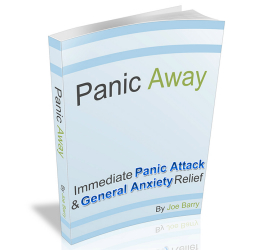



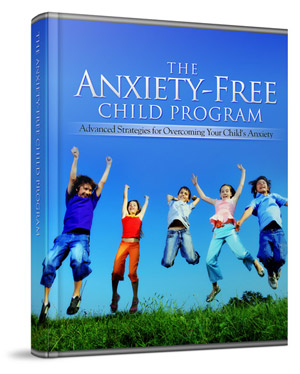



 RSS Feed
RSS Feed